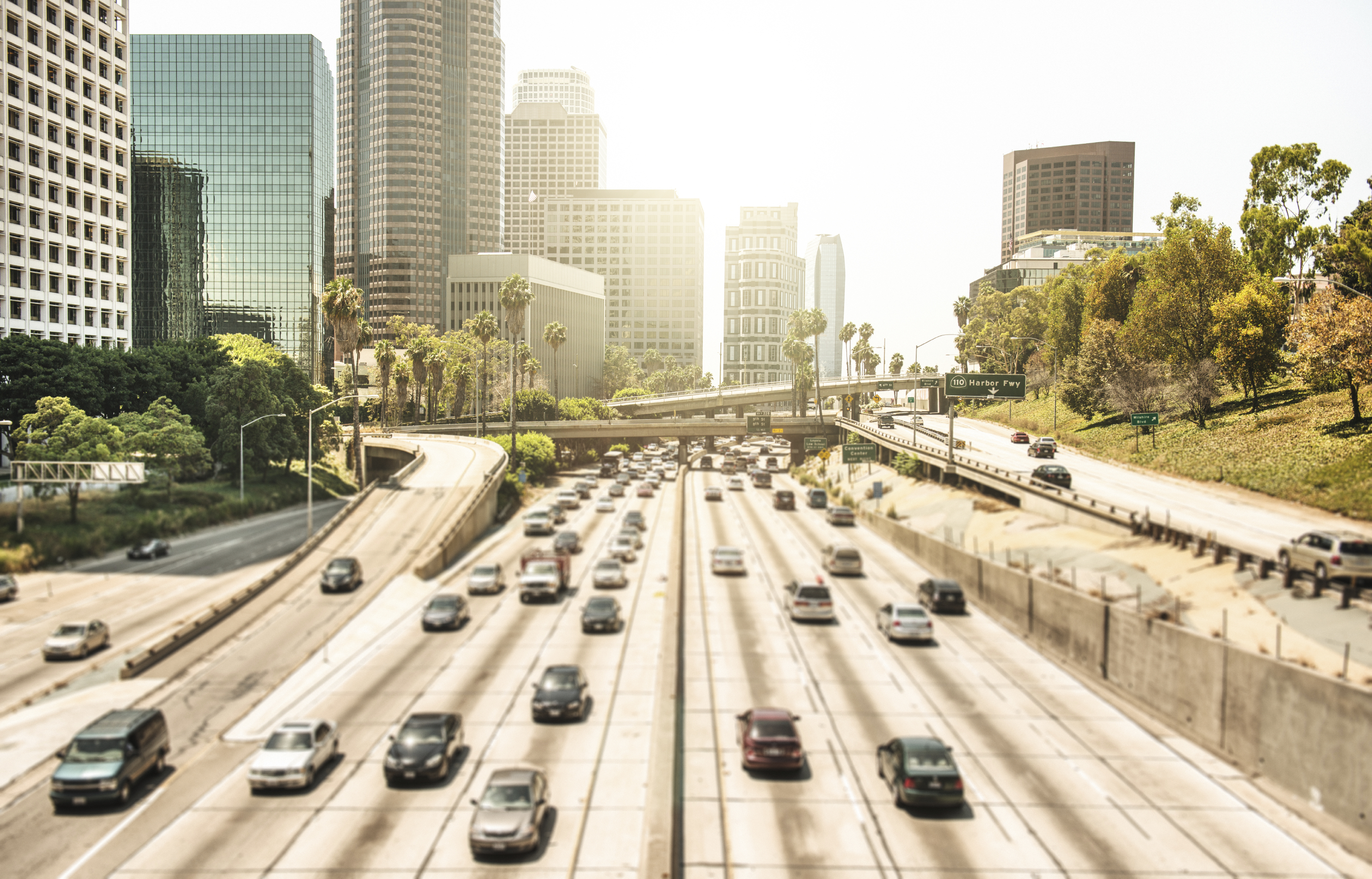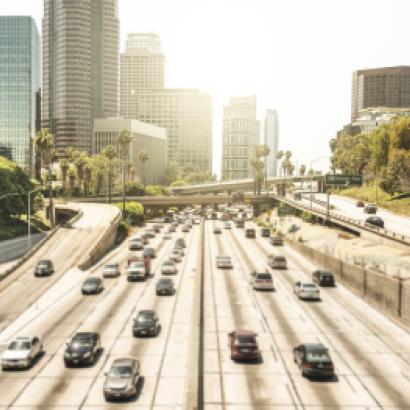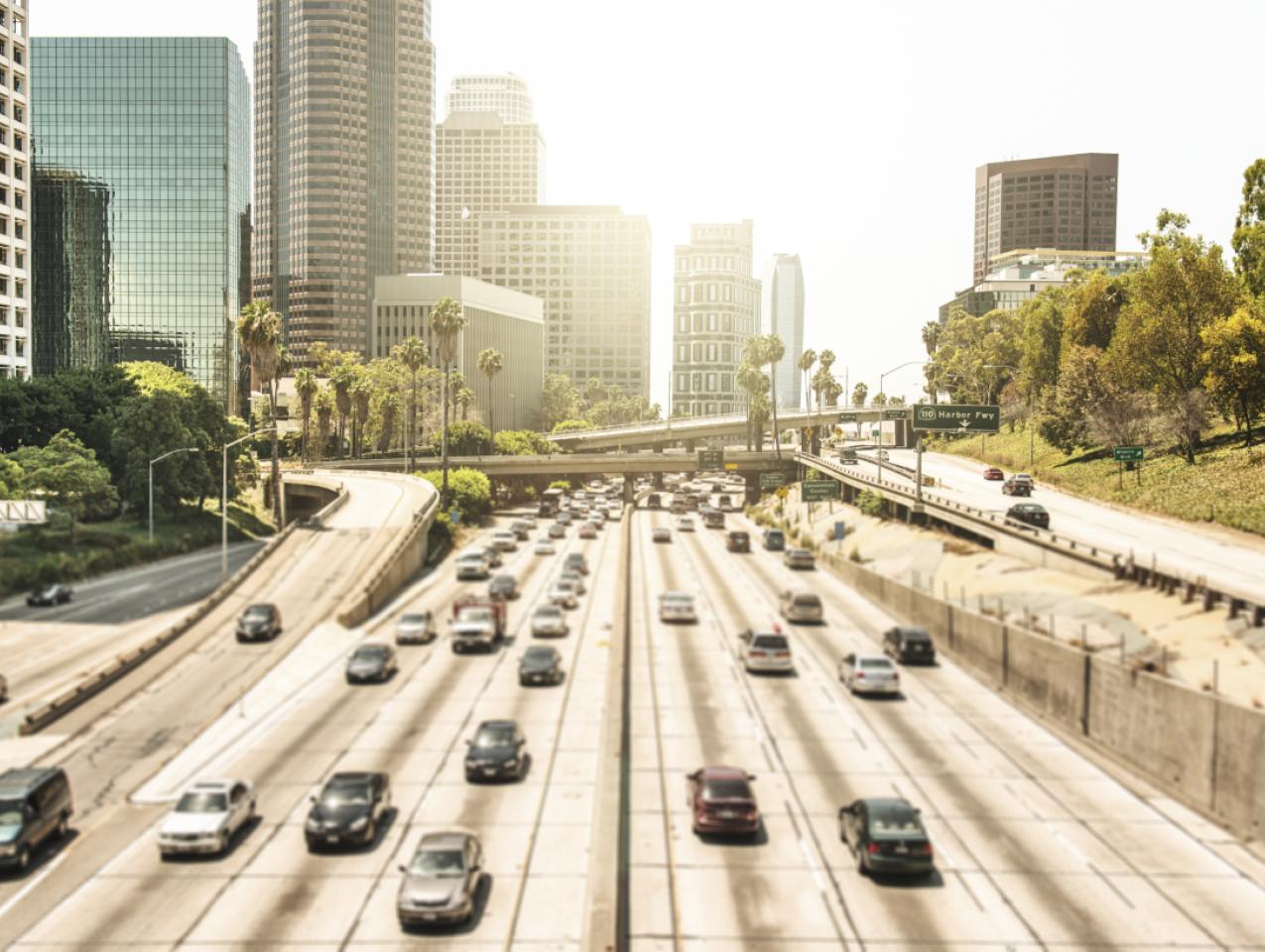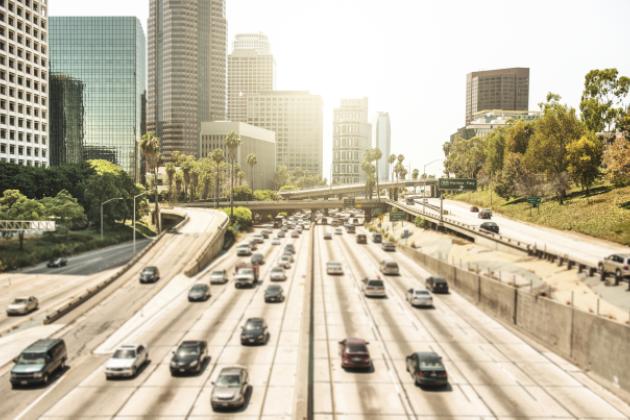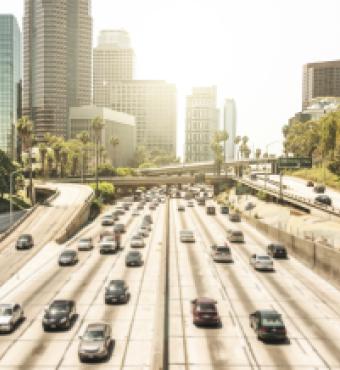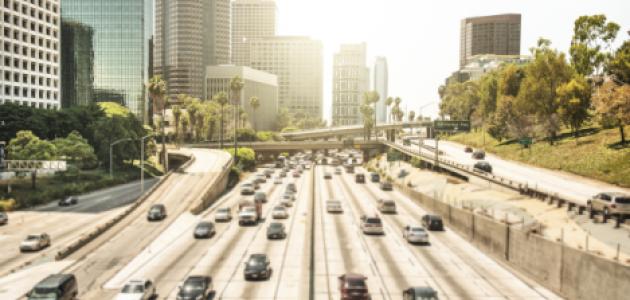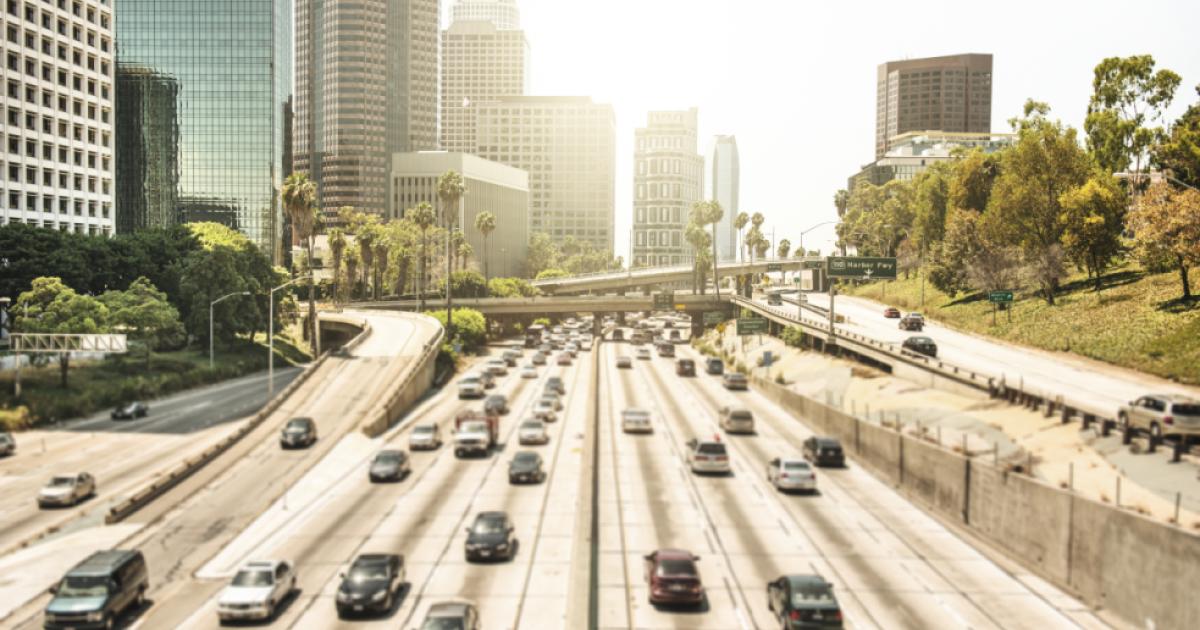Californians long led an idyllic version of the American Dream: lots of sunshine, jobs, upward mobility, home and automobile ownership, inviting ample space and tremendous mobility. Long a harbinger of national trends and an incubator of innovation, the Golden State used to be home to steadily rising standards of living, outstanding public schools and universities, and enviable infrastructure.
But then something went radically wrong: California legislatures and governors built a welfare state of high tax rates, liberal entitlement benefits, and excessive regulation. That backfired into results far worse than just a parody of a progressive utopia. Rather than the European-style green socio-economic equality fantasized by California’s coastal liberal elites, for most Californians it has Europe’s relative economic stagnation and is heading toward South America’s inequality.
For the past three decades California has experienced excessive swings in its economy and financial fortunes that are far worse than in other states. From the mid 1980s to mid 2000s (both in the middle of economic expansions), California’s population grew by 10 million. But the number of income tax payers rose by just 150,000. Meanwhile the prison population soared, and MediCal (the state’s Medicaid program) recipients rose by 7 million in this pre-Obamacare Medicaid expansion period. From the mid-2000s to the middle of the current decade, the population grew by about three-and-a-half million and the number on assistance programs grew apace. With 12 percent of the nation’s population, California has almost a third of America’s welfare recipients. California's 14 million MediCal recipients by themselves would constitute the fifth most populous state in the nation.
Under the Census Bureau’s most accurate measure, more than one in five Californians lives in poverty, by far the highest of any state; shockingly, California’s rate is 41% higher than Alabama, 49% higher than South Carolina and 28% higher than even higher cost of living New York. But it is not only a problem of the lower tail of the income distribution; middle-income Californians are struggling too. Surprisingly, median household income, when adjusted for household size and cost of living, is below the national average! While down considerably from the recession peak, currently only five states have a higher unemployment rate. More startling still, despite the remarkable technology and entertainment wealth, real disposable income per capita, what Californians on average have available to spend on all their family needs and save for their and their children’s future is 10th poorest of any state.
Partly due to generous union wages and benefits, inflexible work rules and special-interest lobbying, many state programs spend too much while achieving too little. For example, the Legislative Analyst puts annual spending per each of California’s 120,000 prison inmates (8,000 housed out of state) at $71,000, more than twice the national average and far above the income of a middle-income family or a year of attending Harvard. Many of California’s K–12 public schools rank poorly on standardized tests. The infrastructure has not kept up with population growth or even needed maintenance. Unfunded pension liabilities of workers in the state’s CalPERS system run to several hundred billion dollars..
Last year, California’s voters approved a “temporary” twelve-year extension (Proposition 55) of the “temporary” seven-year tax hike approved by voters in the November 2012 election, enforced retroactively to the start of that year. It raised the top marginal state income tax rate to 13.3 percent, the highest in the nation. The original “temporary” tax hike was allegedly to help the state’s emergency funding needs, a rationale that doesn’t apply to the new extension. As the great economist Milton Freidman quipped, “There is nothing so permanent as a temporary government program.”
Worse yet, the House Ways and Means Committee federal tax reform proposal circulating in Washington eliminates the deduction for state income taxes. That would drive up the effective top rate on Californians by two-thirds, from 8 percent netting federal deductibility to the full 13.3 percent. If it becomes law as is, with the top tax rate unchanged and elimination of the deduction, California would become more expensive for its high-income citizens, aggravating an exodus.
California’s spending is financed by what my Hoover colleague John Cogan and I have previously called “casino budgeting,” as it relies heavily on upper-income taxpayers, especially their highly volatile stock options and capital gains, which are taxed as ordinary income. During economic booms and bull markets, revenue flows in at astounding rates; half of all income tax revenue comes from the top 1 percent. This extreme progressivity feeds the welfare state in good times but has a damaging downside. Periods of rapidly rising revenues are followed by complete collapse, as the capital gains and stock options of the top 1 percent plunge. For example, in the 2009 recession, gross state product (the state equivalent of a nation’s GDP) fell 3.7 percent, but revenue plummeted 23 percent and the top 1 percent income share declined from 48 percent to 37 percent. But because the revenues are all spent—and often even more committed—on the upswing, disruptive emergency cutbacks, often in services for our most vulnerable citizens, are inevitable on the way down. Also victimized are counties and towns, which are asked to shoulder increased responsibilities without accompanying resources. A court-ordered reduction in the state’s prison population, for example, wound up shipping inmates to local jails. The state’s progressive tax-and-spend culture episodically starves vital services, from courts and parks to education and health care. The state desperately needs a less volatile revenue model, such as that suggested eight years ago in this report from the bipartisan Commission on the Twenty-First-Century Economy, of which Cogan and I were members.
The time to prepare for the next downturn is during the boom, not after it ends, turning dreams into nightmares. California needs a less volatile, more prudent tax structure with lower rates on a broader base of economic activity and people (almost half of all Californians pay no income tax). Inefficient state programs must be reformed to produce far better outcomes while spending less. Infrastructure spending should be redirected to maintaining and upgrading roads and ports, not giant new boondoggles.
Although the water infrastructure needs upgraded storage and transport capacity, far greater reliance on water markets to efficiently allocate water to its most productive uses is the top priority and would reduce the needed additional spending. The governor’s twin Delta Tunnel plan, which he is trying to pressure the state’s water districts to support and pay for with rate increases, is an expensive way to deal with the problem of saving a tiny fish, the delta smelt, protection of which has had the state diverting desperately needed freshwater into San Francisco Bay and the Pacific Ocean, even during the drought. Unfortunately, the governor’s plan, despite good intentions, does not add needed water. The plan is in deep trouble after the Westlands Water District, the largest agriculture water district in the state and the Santa Clara Valley Water District, the largest in Silicon Valley, overwhelmingly voted not to participate. Worse yet, California’s state auditor ripped repeated “significant cost increases and delays” and the failure to complete “either an economic or financial analysis to demonstrate the financial viability of the project.”
Californians have supported more education spending in the past on the assumption it would improve education outcomes.
Unfortunately it has not.
The state sadly has an elementary and secondary school system that ranks in the bottom fifth in math and reading scores. Of public school students tested in the California Assessment of Student Progress and Achievement only 37 percent in math and 48 percent in English scored as on track to be prepared for college after graduation. In Los Angeles Unified, the state’s largest district, the scores were even worse, 28 percent and 39 percent. Tragically, for African American children the scores were 18 percent and 31 percent. The high school dropout rate has soared relative to the national average, especially for African Americans and Hispanics. Not surprisingly, the best evidence, from the reforms in Newark funded by Facebook founder Mark Zuckerberg, reveals that improving student performance is best achieved by them migrating from low performing to better performing schools and also shutting the bad schools. The June 2014 Vergara decision lent a ray of hope that California students trapped in underperforming schools, sometimes with poor teachers, might get relief from rigid tenure rules. But the decision was overturned in April 2016 by California’s liberal appellate court, with backing from Governor Brown and then attorney general (now senator) Kamala Harris, despite polls showing a majority of Californians favor greater school choice for children in underperforming schools.
The state needs greater efficiency from its huge highly rated, higher education system. Too many students, for example, take five, even six, years to earn a bachelor’s degree if at all. Among the reasons are that there is no space in needed classes. So why doesn’t the state wheel education units like it wheels electricity on the grid? If a student can’t get a needed class at San Francisco State, allow him or her to take it at nearby San Jose State. Provide better bridging from less expensive community colleges to the California State University or University of California system. For example, provide updated information online to high school and community college students about how to map specific community college courses into specific course requirements, by major, at the four-year schools. Make better use of online education. Improve vocational education in the community colleges, especially in areas with lots of real job openings, rather than try to push an ever-higher percentage of students into four-year colleges, assuming large debt, many majoring in subjects unlikely to lead to successful careers. The American Association of Community Colleges Pathways Pilot project offers a potential guide.
Governor Jerry Brown, next year ending his second two-term stint in Sacramento, will leave a mixed legacy to his successor. Brown’s policies are more nuanced than is typical of liberal tax-and-spend governors in blue states. He insists on mandating that 50 percent of California’s electricity come from renewable resources such as solar and wind by 2030. His zero-emission vehicle plan demands 1.5 million electric vehicles on the road by 2025, despite the greater cost and dubious net environmental improvements when accounting for the full cost of production, electricity generation, and battery disposal. But so far, and unlike New York governor Andrew Cuomo, Brown has refused to ban fracking in California, much to the dismay of local environmentalists. With a revenue boom from the economic recovery and bull stock market, Brown insisted on dedicating a small portion to the state’s rainy day fund, but it is still only two-thirds of the targeted 10 percent of revenue, far too small to buffer the state’s finances in a deep recession and needs to be better protected from raids by the legislature to fund pet programs. And he courageously vetoed a bill to codify controversial Obama-era policies, under threat of losing state funds, on campus sexual assault that were widely considered an abridgement of due process for accused students.
Brown’s biggest achievement in his second run as California’s governor (he also managed the state from 1975 to1983, succeeding Ronald Reagan) is presiding over a budget that moved from a large cash deficit to a cash surplus. The main engine was a surge in revenue from the economic recovery and stock boom and the “temporary” tax hike (2012s Proposition 30).
Brown, to his credit, has somewhat restrained a California Democratic Party that dominates the state legislature from still higher spending. He has also wisely avoided being overly optimistic in the economic and budget outlook he presents every January in his proposed budget and every May in his budget revision. But unfortunately Brown has not proposed using the temporary budget breathing room to push for a broader tax base, lower rates, and less reliance on an income tax that now accounts for almost 70 percent of general fund revenue, up from 10 percent in 1950.
Brown has nibbled around the state’s structural budget crisis. A Stanford study estimates the unfunded pension liabilities in the state’s CalPERS system in the $800 billion range. It is increasing by $15–20 billion a year. This means the state’s small cash surplus is, in reality, a whopping deficit. I can attest, based on personal conversations, that Brown is more than aware of these problems. He once even quipped: “It’s not even a matter of higher math. It’s fifth-grade arithmetic.”
Unfortunately Brown’s mostly sensible pension reforms are too small to matter much, and even these are being challenged by public unions in the courts. Almost all affect only new state employees and will have little impact for decades. To deal with the analogous deficit in funding teacher pensions, California’s governor shifted most of the cost to local school districts. Unfortunately this will crowd out teacher hiring, school construction, and equipment. Although he inherited them, Brown is presiding over the most rapid expansion of unfunded liabilities in state history.
In a private business such cost pressures would lead to major attempts to enhance efficiency, yet there is no serious Brown reform agenda. But Governor Brown has taken every opportunity to push forward his signature initiative: a high-speed rail system connecting Los Angeles and San Francisco. Originally voters approved a $9 billion state bond issue out of a projected total $33 billion cost (2008’s Proposition 1A), the balance supposedly from federal and private funds. The projected cost has now doubled to $68 billion and will use substantial existing rail, thereby slowing the speed considerably. So call it “blended” speed rail. Little private funding or federal revenue appears on the horizon, so Brown has raided the state’s cap-and-trade carbon pricing to permit auction revenue, ostensibly devoted to environmental improvements, to keep alive what is likely to become the biggest white elephant in California’s history. Drilling delays, cost overruns, and seismic problems in the earthquake-prone mountains north of Los Angeles, some never even mapped, do not augur well.
California has become a one-party state with the Democrats enjoying supermajorities in the assembly and the senate, as well as the governorship and all other statewide offices (Democrats control all three levers of government in only six states: California, Connecticut, Delaware, Hawaii, Oregon, and Rhode Island). Recent attempts to moderate this near-absolute one-party power, such as changing the primary system to a “top two regardless of party advance to the general election,” were expected to elect more moderate Democrats. Thus far, however, there have been only slight constraints on the party leaders and thus policy.
The power in Sacramento of the public employee unions, trial lawyers, and extreme environmentalists is difficult to overestimate. Some indication can be inferred, for example, given the legislature recently had the gall to consider a bill that would make it illegal for California’s local governments and agencies to produce cost estimates and financial projections during often months-long labor negotiations. Local officials should apparently be expected to sign on to an agreement without knowing the future financial implications! That’s one of the reasons for the immense pension shortfall beginning to force bankruptcy on some of California’s towns and cities. Another bill would have made it illegal for cities, towns, and agencies to contract with private companies to provide services. That would virtually require them to hire more government workers and therefore public employees’ union dues- paying members. Again the cost to taxpayers in the many financially strapped California towns and cities be damned.
It would be wonderful if Governor Brown used his final year in office to deal more forcefully with the state’s huge problems, but no one expects him to do so. The three Democrats vying for the right to succeed Brown—Lieutenant Governor Gavin Newsom, former Los Angeles mayor Antonio Villaraigosa, State Treasurer John Chiang— have mostly been raising money with attacks on President Trump, whose approval ratings in the state are well below the national average. The Governor and Legislature declared California a “sanctuary state,” although the bill appears to be more symbolic than substantive.
There should be opportunities for the state to work with the Trump administration, for example, on badly needed infrastructure. The state’s roads, ports, dams, and water transport systems are in a sorry state of repair and in desperate need of too long deferred maintenance. Studies show the largest return on infrastructure projects to be on maintenance and repairs. For example, the Oroville Dam fiasco that caused almost 200,000 people to evacuate their homes was recently shown to have been easily foreseeable if routine inspections had been done during the last few decades. The Los Angeles–San Diego corridor and the San Francisco Bay Area suffer extreme traffic congestion yet there has been little experimentation with congestion pricing. Worse yet, the Sacramento social engineers try to force carpooling with high occupancy vehicle lanes that are underutilized, have 20% less capacity than if part of the multi lane system, do not increase car-pooling measurably, and do not reduce congestion.
California still ranks first in technology, agriculture, entertainment, and higher education. It has more of the world’s leading universities than any other state and more even than any country, save perhaps the UK. But it is near the bottom in business and tax climate and state bond ratings, on which only Illinois and New Jersey are lower. Beyond the remarkable concentration of technology behemoths, such as Apple, Facebook, Google, and Oracle in Silicon Valley, are struggling small businesses, middle-class stagnation, a manufacturing exodus, and an unfulfilled dream. Technology investors, some of their workers, and the state’s highly subsidized green energy producers and public employees are the exception at the expense of the rest of the population.
No one should write off California—even in the next downturn, the financial effects of which are likely to be worse in the Golden State than elsewhere, given the volatile tax structure. It still has great strengths and it can turn, and should be working on turning, some of its short-run challenges and hot button immigration issues, resulting from ethnic and linguistic diversity (more than half of the state’s population is of Hispanic and Asian heritage) into longer-term strengths in the global economy.
Continuing down the path of pumping more spending into poorly targeted, inefficient and ineffective programs, ever-higher taxes, added regulation, and exploding borrowing will eventually exact a very high price on Californians. The sooner meaningful reforms in these policies are implemented, the more modest and gradual they can be, and the more likely the state can avoid a debilitating crisis.
From a more efficient, stable tax system to relief from regulatory overreach, from prudent gradual pension reform to more effective, better targeted spending, from investing in the nuts and bolts of improved infrastructure rather than ill-conceived costly mega-projects likely to fail, from reforming education so funds produce better outcomes to more open, transparent, and competitive government, there is much to do to build a better California. I believe that certainly can, indeed must, be done. But it will take bolder leadership, unafraid to speak the truth and challenge the deeply entrenched vested interests in Sacramento now running California and ruining its future.

TAXING CALIFORNIA’S PATIENCE
One of the more ignominious moments of late in Sacramento: the fate of Gov. Schwarzenegger’s Commission on the Twenty-First Century Economy, a fourteen-member bipartisan group that included input from Hoover economists. The commission’s report, trotted out in September 2009 and meant to be phased in beginning in 2012, aimed to curb California’s overreliance on personal income taxes, eliminate the corporate tax, and establish new business receipts. But the proposal was treated as dead on arrival by California’s Democratic-controlled legislature. Tax reform fell by the wayside and has not been reconsidered since. The last time California’s elected leaders offered rate relief? That would be twenty years ago this year, when a GOP governor and Democratic legislators addressed personal, corporate, and property taxes. To the list of life’s certainties in California, add death, taxes, and no movement on cutting taxes.







